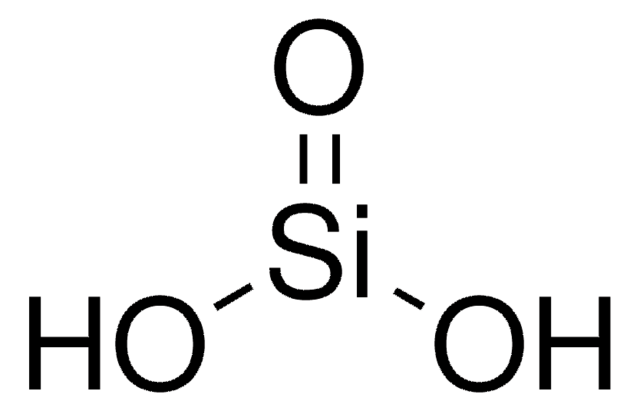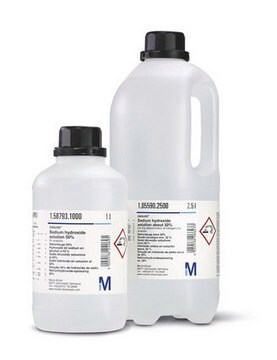All Photos(4)
About This Item
CAS Number:
EC Number:
MDL number:
UNSPSC Code:
12352301
PubChem Substance ID:
NACRES:
NA.21
Recommended Products
form
powder
Quality Level
loss
<16% loss on ignition
particle size
−80 mesh
SMILES string
O[Si](O)=O
InChI
1S/H2O3Si/c1-4(2)3/h1-2H
InChI key
IJKVHSBPTUYDLN-UHFFFAOYSA-N
Looking for similar products? Visit Product Comparison Guide
Application
Silicic acid is a hydrophilic inorganic material that can be used as a zirconium phosphate additive to enhance proton conductivity in the inorganic-organic composite membranes. It can also be used as a binder for the electrodes of thermal batteries.
Storage Class Code
11 - Combustible Solids
WGK
WGK 3
Flash Point(F)
Not applicable
Flash Point(C)
Not applicable
Choose from one of the most recent versions:
Already Own This Product?
Find documentation for the products that you have recently purchased in the Document Library.
Customers Also Viewed
Silicic acid polymerization catalyzed by amines and polyamines.
Mizutani T, et al.
Bulletin of the Chemical Society of Japan, 71(8), 2017-2022 (1998)
The Intimate Role of Imidazole in the Stabilization of Silicic Acid by a pH-Responsive, Histidine-Grafted Polyampholyte.
Demadis KD, et al.
Chemistry of Materials, 27(19), 6827-6836 (2015)
T I Nikoforova
Voprosy kurortologii, fizioterapii, i lechebnoi fizicheskoi kultury, (3)(3), 16-21 (2013-07-04)
This article is focused on the benefits of drug-free therapeutic technologies, such as the use of artificial general siliceous baths for the treatment of patients with arterial hypertension. This approach results in the anti-hypertensive effect simultaneous with the correction of
Li-Na Niu et al.
FASEB journal : official publication of the Federation of American Societies for Experimental Biology, 26(11), 4517-4529 (2012-08-04)
Traditional bone regeneration strategies relied on supplementation of biomaterials constructs with stem or progenitor cells or growth factors. By contrast, cell homing strategies employ chemokines to mobilize stem or progenitor cells from host bone marrow and tissue niches to injured
Tsuyoshi Yamamoto et al.
Journal of plant research, 125(6), 771-779 (2012-04-25)
Rice (Oryza sativa L.) is a typical Si-accumulating plant and is able to accumulate Si up to >10 % of shoot dry weight. The cell wall has been reported to become thicker under Si-deficient condition. To clarify the relationship between Si
Our team of scientists has experience in all areas of research including Life Science, Material Science, Chemical Synthesis, Chromatography, Analytical and many others.
Contact Technical Service









